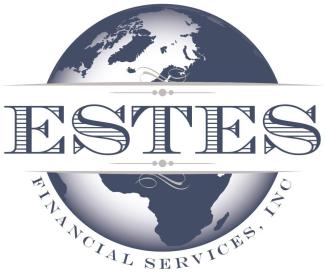
What You Need to Know about Universal Life Insurance
Universal life was introduced nearly three decades ago as an alternative to whole life insurance which had been gradually losing favor due to its low rates of return and its inflexibility as a financial management tool. With interest rates on fixed yield investments reaching as high as 18%, life insurers were under pressure to attract more premium deposits with a product that could compete. They delivered with a life insurance product that offered the opportunity to own permanent life insurance while earning competitive rates of return. Since then, universal life has eclipsed whole life as the preferred choice of permanent life insurance.
The Appeal of Universal Life Insurance
In addition to more competitive returns on their cash value, people were also drawn to universal life because they could better understand how it worked. As opposed to a whole life insurance policy, which was never very transparent in terms of its inner workings, universal life is completely unbundled so that each of its components can be seen and their relationships can be understood by the insured.
People understand a savings account, which universal life has. They are also familiar with the concept of a separate death benefit and mortality charges such as is found in term life policies. Universal life simply combines the separate savings account component with a separate death benefit component, and the insured is able to manage each of them separately.
How Universal Life Works
The Bucket Analogy: A popular analogy used to describe how universal life policy works is a bucket with spigots. The bucket represents the accumulation account and the spigots are the way the life insurer takes what it needs to cover expenses. Each year premium payments are dropped into the bucket and then the life insurer drains what it needs for insurance and administrative costs. The rest remains in the bucket to which interest payments are added each year. All of this is documented in an annual statement so the insured can clearly see what has gone in to the bucket and what has come out.
Lower Premium Payments: With this structure, the premiums for universal life are generally much lower than those for whole life because the costs needed to pay for the death benefit come from the accumulated cash value. Much like whole life, the premium of a universal life policy is based on the projected growth of cash value up until the policy matures. However, with universal life, the cash value has the potential to grow faster than the guaranteed rate, so the premium required to support the death benefit could be lower than projected.
Premium Flexibility: If the cash value exceeds projections, the insured would have the option to lower the premium payment or completely skip it. The policy would draw from the accumulated cash values to make the required minimum premium payment. If the accumulated values drop too far, the insured would have to kick in additional premiums to bring it back to the level needed to maintain the death benefit or risk lapsing the policy.
Conversely, insureds can pay more than the target premium in order to build up the cash values more quickly. In doing so, they can potentially reduce their premium payments more quickly in the future. This method of accelerating the premium payments may be useful for people who can afford larger current payments in anticipation of lower cash flow in the future, or, perhaps, a desire to allocate their cash flow to other purposes. There is a danger of accumulating too much cash value, too quickly that could possibly cause the life insurance to be disqualified under the tax code. If that were to happen, the policy could lose its tax benefits.
Account Access: Universal life also provides greater flexibility for accessing the cash value. As with whole life, insureds can borrow their cash value at a low rate of interest. Although the money is no longer in the account, the insurer still credits a minimum rate of interest on it, so the actual net cost of borrowing the money is very low. Loans that aren’t paid back will reduce the amount of the benefit paid at death, and could be subject to taxes.
Unlike whole life policies, universal life policies also allow for partial withdrawals. As long as there are sufficient cash values the insured can make a partial withdrawal, and because the principal is first to come out of the account, they aren’t taxed. Again, if, the cash values fall below a certain level, the insured would have to deposit additional premium to keep the policy from lapsing.
Death Benefit Options: With universal life you can choose from two death benefit options. The first option offers a level death benefit that pays the beneficiary the amount of the death benefit only. The second option offers a death benefit plus cash value option that pays out both. The second option requires a higher premium payment, but it also can result in an increasing death benefit because the cash value growth will push it higher.
Why Choose Universal Life
You can see that universal life has several moving parts that can be managed by the insured. This makes it an effective financial management tool for people who expect their circumstances to change over time. It offers the security of permanence while providing the flexibility most people need to adjust to changing circumstances.
With rising interest rates, universal life provides a viable savings alternative with tax advantages. It has the potential to accumulate enough funds to supplement important financial needs such as college expenses or retirement while paying for life insurance protection.
Summary
Once you understand the basics of universal life its appeal becomes more apparent. People are drawn to its simplicity and its flexibility. As a low cost alternative to whole life, it fills the need for people who prefer a more permanent form of life insurance.
Life insurance policies contain exclusions, limitations, reductions of benefits, and terms for keeping them in force. Your financial professional can provide you with costs and complete details.
Loans and withdrawals reduce the policy’s cash value and death benefit and increase the chance that the policy may lapse. If the policy lapses, terminates, is surrendered or becomes a modified endowment, the loan balance at such time would generally be viewed as distributed and taxable under the general rules for distributions of policy cash values.
*This content is developed from sources believed to be providing accurate information. The information provided is not written or intended as tax or legal advice and may not be relied on for purposes of avoiding any Federal tax penalties. Individuals are encouraged to seek advice from their own tax or legal counsel. Individuals involved in the estate planning process should work with an estate planning team, including their own personal legal or tax counsel. Neither the information presented nor any opinion expressed constitutes a representation by us of a specific investment or the purchase or sale of any securities. Asset allocation and diversification do not ensure a profit or protect against loss in declining markets. This material was developed and produced by Advisor Websites to provide information on a topic that may be of interest. Copyright 2025 Advisor Websites.

